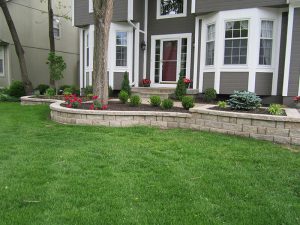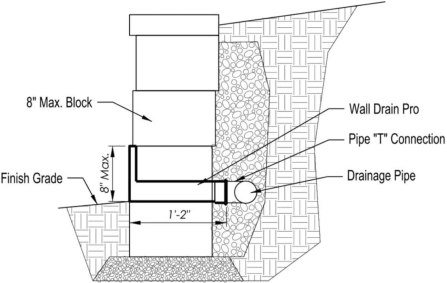Retaining walls for landscaping are still an significant part the landscape. They give you a functional material that lets you maintain your picture. Retaining walls may be used to construct walls across a garden, fence, pool or pond, they can also be used as retaining walls for soil erosion control as well as obstacles against the growth of invasive plants and creatures. When building a retaining wall, then it is a good idea to take into consideration the requirements of the particular sort of animal or plant which you wish to keep out of the area. There are certain substances and techniques which need to be utilized for different types of plants.
Retaining Walls For Landscaping
Retaining walls are often built from two main substances; concrete and timbers. Concrete forms are stronger and far more durable, but can be costly to install. Timber is cheaper and provides exactly the same strength, but requires a lower cost for installation, making it very practical for smaller projects around the home. Timber can be cut into appropriate sizes to suit the plant needs and can be rendered as a pure finish to blend in with the landscape.
Retaining Walls For Landscaping
Retaining walls are used not just to create a barrier against erosion and to provide a structure to anchor soil, but they may also be used to provide privacy when required. Concrete retaining walls can come in a variety of styles and there are lots of distinct colours and textures available. Brick, stone, concrete and flagstone are all commonly used substances for retaining walls.
Retaining Walls For Landscaping
Retaining walls deliver many advantages and are especially good at reducing erosion. As earthbound plants break down, they often spill over into adjoining areas of the backyard causing erosion. Retaining walls provide a temporary barrier and this also stops any further harm being done.
-
Retaining walls can offer shelter from sunlight by providing barriers to sun, particularly on warm days. Planting trees near the retaining wall may also provide shade and reduce the demand for air conditioning. Retaining walls may also provide protection for the backyard in heavy windy conditions. In areas where ground movement is a problem, retaining walls offer a strong keeping grip that reduces damage caused by altering soil.
Retaining walls are a significant part a landscape and can be used for various purposes based on the aim of the wall. Retaining walls are most commonly utilized to form a border round a garden. Gardeners will frequently use retaining walls to surround a pool or pond. Retaining walls can also be used to form boundaries around a patio or decking area. Retaining walls are also commonly used to surround the entrance to your home and can help to protect visitors from the outside. Retaining walls may even be constructed up to the border of a garden.
Building retaining walls takes time and careful planning, and the outcomes depend on the sort of rock used, the size and the material used. As an example, if the wall is to be used to surround a pond or swimming, then it is best to use a stone or a similar material that could resist the unpleasant elements in a natural environment like a pond or a waterfall. Stones that are employed in the landscaping of a lawn may be earthy colours like brown, grey, terracotta, or even brick can work well. These earthy colours can be mixed with more vivid colours, such as blue, red, yellow and green to create a unique color scheme and design.
Earth tones are extremely popular and many people will use this type of rock to create retaining walls. Earth tones will also be the most common choice for retaining walls utilized in the landscape of a yard. However, there are different choices available if more competitive techniques are needed to maintain the construction of the wall. When selecting stones for a retaining wall, you might wish to think about using a variety of different sizes, shapes, textures and colours. The fashion of stone must fit the surrounding landscape, but in the same time provide enough character so that it stands out and blends well with the surroundings. Finally, when you construct retaining walls, you want them to look as natural as you can.
